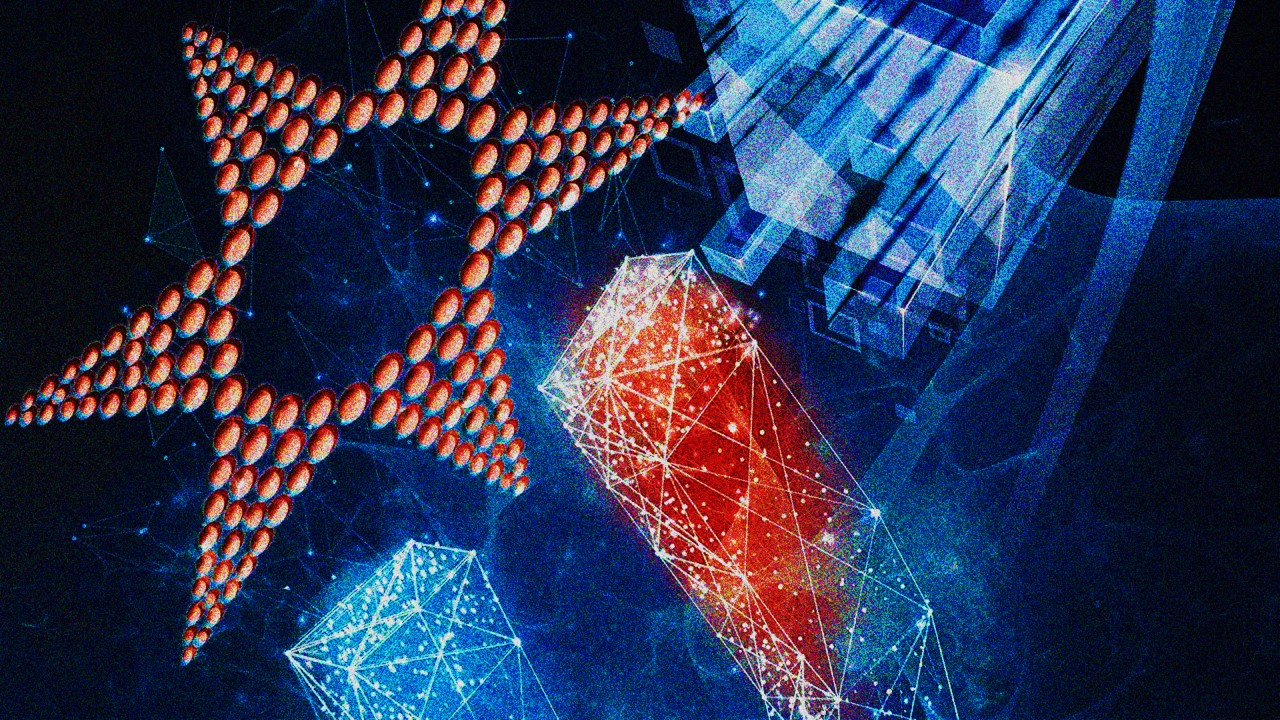Blood, a highly intricate tissue composed of various cells and proteins, is intricately regulated to maintain a delicate equilibrium between coagulation and anticoagulation processes. In medical applications, this equilibrium is disrupted when synthetic surfaces contact blood, initiating the coagulation cascade. This process begins with the activation of factor XII (FXII) upon surface contact. While many efforts have been made to create antithrombotic surfaces that prevent coagulation activation, none have successfully eliminated this risk. Consequently, anticoagulants are often used alongside blood-contacting medical devices, introducing an elevated risk of bleeding complications.
The development of blood-compatible, antithrombotic materials has largely relied on antifouling strategies designed to repel proteins and cells. However, these approaches exhibit fundamental limitations, including the untested assumption that repelling proteins can prevent coagulation. Given these challenges, a novel approach has emerged: a selective protein-interacting (SPI) coating, which regulates coagulation by specifically modulating interactions with FXII. This article explores the synthesis and mechanisms of SPI coating and assesses its potential to address the limitations faced by traditional antifouling surfaces.
Revolutionizing Coagulation Control: The Design of SPI Coating
Studies analyzing synthetic surfaces have identified their varied effects on plasma clotting. For instance, negatively charged, positively charged, hydrophobic, metallic, and hydrophilic surfaces each exhibit distinct influences on coagulation pathways. Among these, positively charged surfaces were found to have minimal clotting effects; however, conventional cationic surfaces often pose toxicity risks due to strong electrostatic binding that can activate immune responses and induce cellular toxicity. This insight led to a shift toward developing a positively charged surface capable of modulating protein interactions while remaining biocompatible and minimizing clot formation.
The SPI coating was constructed using sheltered positively charged macromolecules (SPCMs) that prevent clotting by regulating protein interactions. These SPCMs are built upon hyperbranched polyglycerol (HPG) cores adorned with positively charged groups shielded by methoxy polyethylene glycol (mPEG). This configuration retains the benefits of a cationic surface without toxic effects, enabling it to selectively interact with blood proteins while inhibiting coagulation activation. The SPI coating thus represents a design that combines controlled protein interaction with enhanced biocompatibility, offering a promising new approach for blood-contacting applications.
Mechanistic Insights: Preventing FXII Activation with SPI Coating
Investigations into the SPI coating’s effects on coagulation have demonstrated its efficacy in minimizing contact activation in human plasma. Unlike conventional surfaces that readily activate FXII, the SPI coating was shown to bind FXII without initiating activation. This selectivity stems from the unique interaction of FXII with the SPI surface, where FXII undergoes binding but does not transition into its active form.
The conformational stability of FXII on the SPI coating was further confirmed through structural analyses, which indicated that the protein’s binding did not lead to its activation or promote thrombin generation. In contrast to other surfaces, where FXII activation initiates a cascade of coagulation processes, the SPI coating’s distinctive binding properties allow it to act as an inert platform for FXII. This functionality positions the SPI coating as a surface that can prevent thrombogenesis while preserving normal hemostasis, making it suitable for long-term blood contact applications in medical devices.
Evaluating Thrombogenic Potential: In Vitro and In Vivo Evidence
Extensive in vitro testing with human plasma and in vivo validation in a rabbit arteriovenous (AV) shunt model revealed the SPI coating’s robust antithrombotic performance. In controlled plasma experiments, SPI-coated surfaces demonstrated a significant reduction in thrombus formation and prolonged clotting time compared to both uncoated and conventional antifouling surfaces. These observations underscored the coating’s efficacy in attenuating surface-induced coagulation activation.
In vivo studies in a rabbit AV shunt model provided further evidence of the SPI coating’s antithrombotic properties. While uncoated catheters exhibited severe intracatheter thrombosis, SPI-coated catheters maintained uninterrupted blood flow and showed minimal thrombus accumulation. Notably, minor clotting was observed near the junction of the catheter and the indwelling needle, attributed to localized shifts in blood flow dynamics. Overall, the SPI coating was effective in resisting thrombosis without the need for additional anticoagulants, highlighting its potential to enhance the safety and functionality of blood-contacting medical devices.
Dynamics of Protein Interaction: FXII Binding and Modulation on SPI Coating
Further analyses into the interaction between the SPI coating and FXII at a molecular level have provided insights into the coating’s antithrombotic mechanism. Through proteomic evaluations and microscopy, the binding characteristics of FXII on SPI-coated surfaces were found to be markedly different from other surfaces. While FXII displayed strong affinity for the SPI coating, it did not undergo activation, a key factor that prevents initiation of the coagulation cascade.
The SPI coating’s ability to bind FXII in a stable, non-catalytic conformation is integral to its antithrombotic effect. Unlike conventional surfaces, where FXII binding triggers activation, the SPI coating stabilizes FXII in an inactive form. This controlled interaction between FXII and the SPI surface allows the coating to resist thrombus formation without interfering with other coagulation factors, supporting a design that ensures hemocompatibility and mitigates the thrombogenicity commonly seen with standard surfaces.
Mechanistic Modulation of FXII: A Closer Look at Surface-Induced Conformation Changes
Studies indicate that the SPI coating modulates FXII by stabilizing it in a non-activating conformation, thereby preventing it from initiating the contact pathway. Tests demonstrated that on conventional surfaces, FXII experiences structural changes that initiate coagulation through activation, while the SPI coating controls FXII in a stable configuration that resists activation. This effect was confirmed through proteomics analyses that detected different conformational outcomes of FXII on SPI-coated surfaces compared to uncoated glass.
This selective binding and conformational control suggest that the SPI coating exerts unique influence over the structural state of FXII. It allows FXII to interact without catalyzing the coagulation process, representing a pivotal advancement in the design of blood-compatible surfaces. By enabling FXII to bind without triggering thrombogenic events, the SPI coating provides a novel antithrombotic pathway distinct from traditional antifouling strategies, one that minimizes FXII-driven coagulation while preserving overall hemostasis.
Outlook and Future Directions: The SPI Coating’s Impact on Blood-Contacting Device Design
The SPI coating introduces a transformative approach in the design of antithrombotic surfaces, offering a universal solution adaptable across various biomedical devices. This selective protein-interacting strategy highlights a paradigm shift away from traditional antifouling tactics by stabilizing key coagulation factors in a non-activating conformation. However, ongoing research is necessary to fully explore the potential of this coating in complex physiological environments.
Future studies should investigate whether the SPI coating maintains efficacy in long-term applications, particularly in the presence of diverse blood proteins. Additionally, understanding the role of other coagulation factors in relation to the SPI coating could reveal broader applications and refine this design approach. Overall, the SPI coating offers a promising new direction in blood-compatible material design, advancing the development of safer, more efficient surfaces for blood-contacting medical devices.
Study DOI: https://doi.org/10.1038/s41563-024-02046-0
Engr. Dex Marco Tiu Guibelondo, B.Sc. Pharm, R.Ph., B.Sc. CpE
Editor-in-Chief, PharmaFEATURES
Register your interest [here] at Proventa International’s Clinical Operations and Clinical Trials Supply Chain Strategy Meeting this 14th of November 2024 at Le Meridien Boston Cambridge, Massachusetts, USA to engage with thought leaders and like-minded peers on the latest developments in the clinical space and regulatory affairs.

Subscribe
to get our
LATEST NEWS
Related Posts

Pathophysiology & Experimental Medicine
Autism Disentangled: FOXG1 Drives Neural Imbalance in the Developing Brain
If FOXG1 overexpression can be modulated, either genetically or pharmacologically, it may be possible to correct the neurodevelopmental imbalances underlying ASD.

Pathophysiology & Experimental Medicine
Adaptive Interactions: How Stimuli-Responsive Materials Revolutionize Cellular Studies
Stimuli-responsive materials revolutionize cellular dynamics research by replicating ECM adaptability, unlocking insights into cell behavior and regulation.
Read More Articles
Myosin’s Molecular Toggle: How Dimerization of the Globular Tail Domain Controls the Motor Function of Myo5a
Myo5a exists in either an inhibited, triangulated rest or an extended, motile activation, each conformation dictated by the interplay between the GTD and its surroundings.
Designing Better Sugar Stoppers: Engineering Selective α-Glucosidase Inhibitors via Fragment-Based Dynamic Chemistry
One of the most pressing challenges in anti-diabetic therapy is reducing the unpleasant and often debilitating gastrointestinal side effects that accompany α-amylase inhibition.













